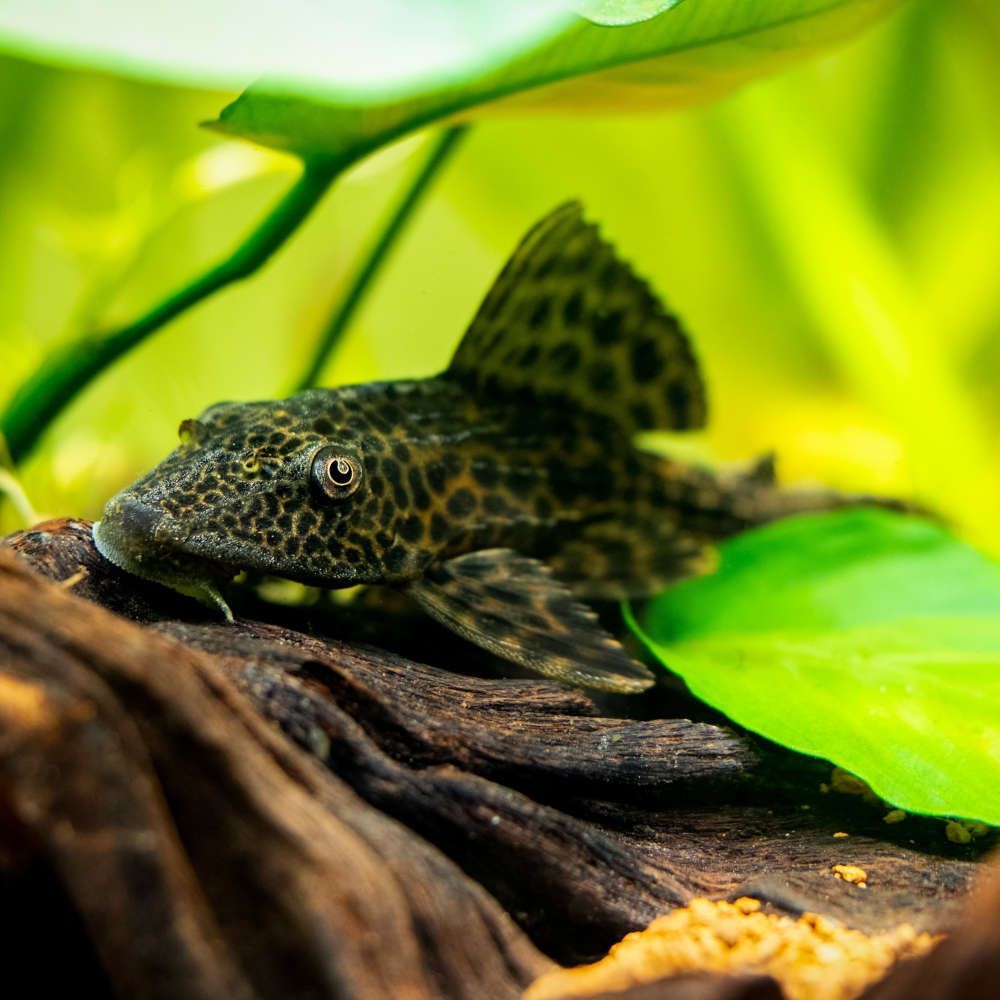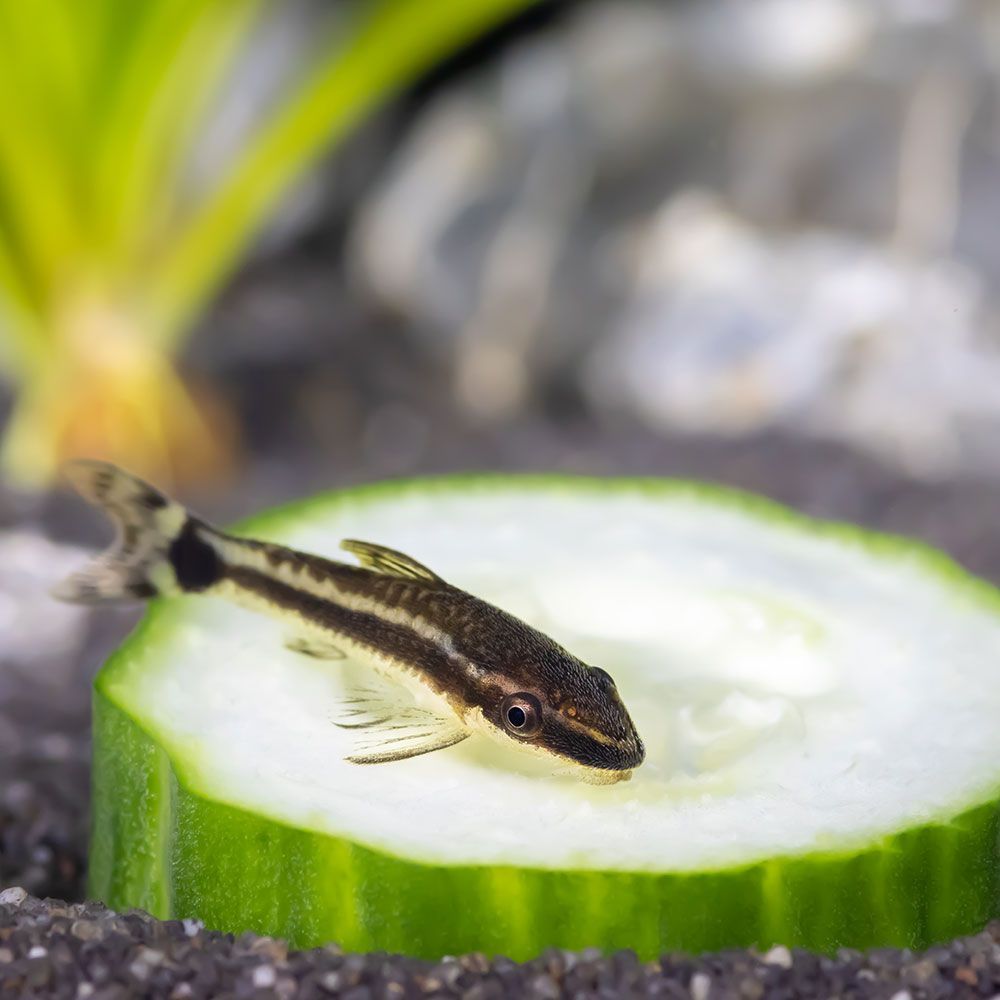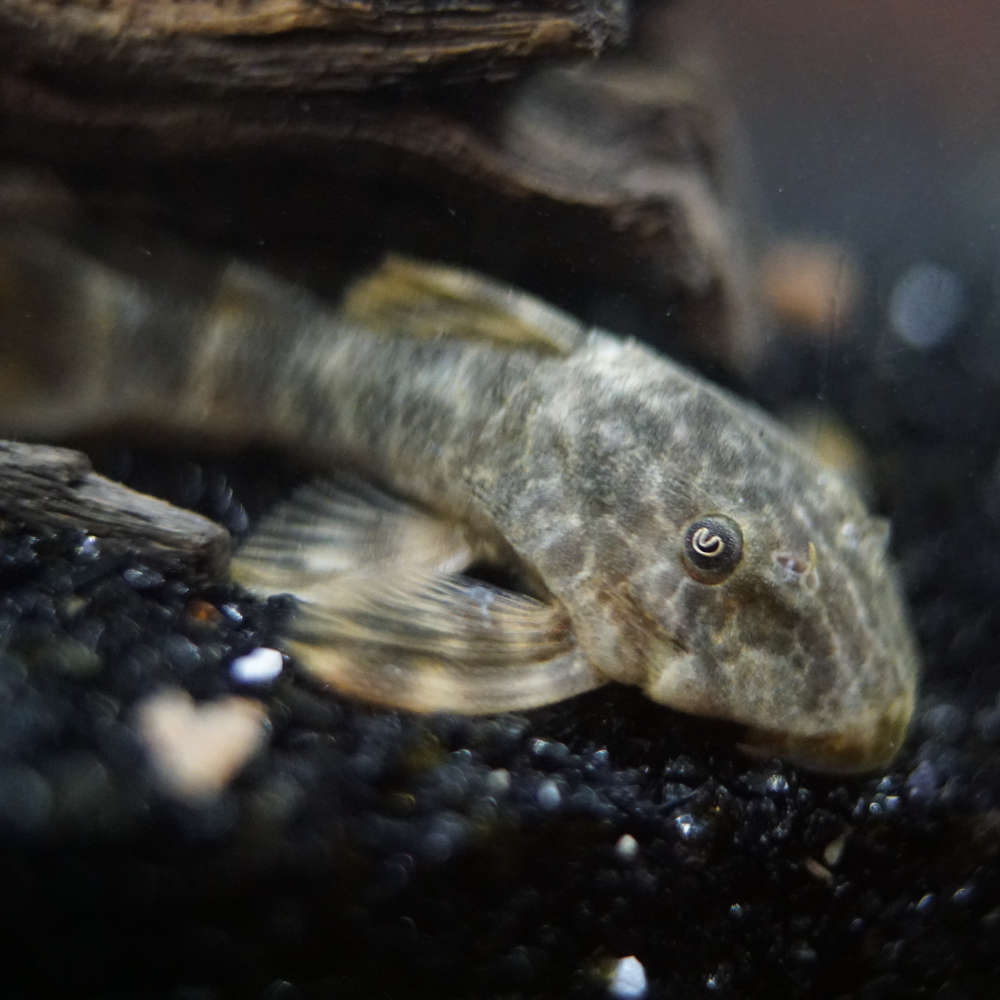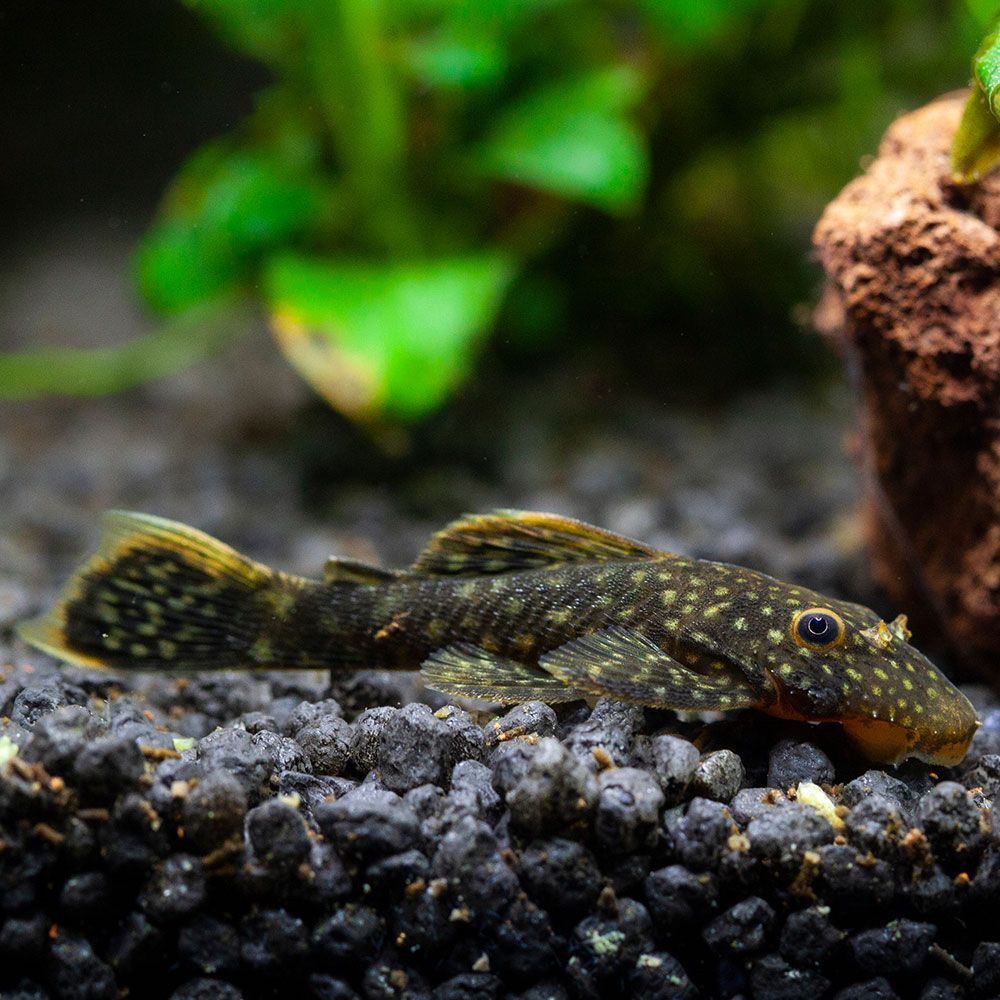Armored catfish have been a popular group of the greatest catfishes of all time.
Enthusiasts love the members of this group due to their robust nature and clever ways to protect themselves from harm – whether by acting like a branch or using sharp spines.
They may appear like ordinary catfish from afar, but some of their unique features have always gathered good attention, and we will discuss them all, here, in this think-piece.
So, let’s get started!
What is an Armored Catfish?
Armored catfishes belong to the Siluriformes order and three different families – Loricariidae, Callichthyidae, and Doradide. Among them, the Loricariidae family is the most prevalent.
This article will be all about the vast Loricariidae family and its top members.
What is a Loricariidae Family?
Loricariids also have a sucker-like mouth on their bottom side, leading to their other name – suckermouths. It helps them to graze on algae and biofilm growth on the tank walls.
Fishes belonging to this family are called loricariids and are primarily found in freshwater habitats of South America – Panama, Costa Rica, and tropical and subtropical areas.
Unlike other fishes, their entire body is covered with bony plates which protect them from predators – which sets them apart from other catfish.
Expandable strong pectoral fins allow them to enlarge their body so that it doesn’t fit in the predator’s mouth.
They can breathe outside water for up to 30 hours, and when they sense a drought season, they “walk” to areas with more water.
In my experience, this is not-so-fish behavior, making this species much more intriguing.
A few loricariids are also identified using their L-number, L-code, or L#. This is especially common in the trade of these catfishes, as many are yet to be taxonomically identified. Here the “L” stands for “Loricariidae.”
This numbering was developed by the owner of Transfish (the first large-scale Loricariidae importer to Germany): Arthur Werner and DATZ (Die Aquarien und Terrarienzeitschhrift) ichthyologist: Rainer Stawikowski.
However, another rival German business (Das Aquarium) wanted to stand out but wasn’t ready to use their competitor’s devised naming.
So, they started labeling loricariids with LDA numbers, where the “L” again implied “Loricariidae” and “DA” is the business name acronym (“Das Aquarium”).
Nowadays, traders, enthusiasts, and biologists actively use the L-numbers.
Currently, this family houses a wide range of catfish – about 92 genera and almost 684 species.
6 Different Types of Armored Catfishes for Freshwater Aquariums
Now that you know all the families and important genera, let’s learn about the most desirable armored catfish among hobbyists!
1. Pleco (Hypostomus Plecostomus)

- Common Names: Plecostomus/Pleco, Devil Fish, Janitor Fish, Municipal Fish, Sweeper Fish, Crocodile Fish
- Average Size: Up to 50 cm (19.7 in)
- Average Lifespan: Up to 10 to 15 years
- Tank Level: Bottom dwellers
- Temperament: Very peaceful
- Diet: Primarily herbivores but accepts omnivorous feed
- Tank Mates: Smaller, calm, and non-territorial species
- Minimum Tank Size: 180 gallons for one
Currently, there are more than 155 species under the Hypostomus species (latest update around 2018), but this is the most popular.
It has a large head with a suckermouth, small but high-set eyes with a light exposure controlling membrane, and an elongated brownish grey/green body. Its body is spotted and striped.
The common plec has 4 bony plate rows, but its abdomen is soft and devoid of plates.
It also has well-developed dorsal, pectoral, and moon-shaped caudal fins. The first ray of the dorsal spine is sharp; the anal fin has one coarse and 3-5 soft rays, while the dorsal fin has one coarse and 7 soft rays.
The adult males have thick reddish-pink pectoral fins. Female fish with eggs seems thicker from the top.
The fish sucks algae from big species’ bodies. It’s acting like an invasive species in Brazil, the USA, Indonesia, Sri Lanka, and Bangladesh, i.e., it enters non-native areas and harms the natives of that ecosystem.
2. Otocinclus (Otocinclus vittatus)

- Common Names: Dwarf Sucker, Dwarf Otocinclus
- L number: LDA023
- Average Size: Up to 4.2 cm (1.65 in)
- Average Lifespan: 3-5 years in captivity, up to 10 years in wild
- Tank Level: Bottom dwellers
- Temperament: Peaceful
- Diet: Primarily herbivorous
- Tank Mates: Its own shoal, other dull-colored, similar-sized or smaller, and peaceful species
- Minimum Tank Size: 25 gallons for 6 of them
As per the latest revisions, there are 19 Otocinclus species, and this one is the talk-of-town in this genus.
The slender fish has a greenish-brown back and a white or cream belly with a prominent brown separation. It has prominent lines on its body and caudal fin. The egg-carrying female fish is thicker than the males from above.
Out of all the registered Otocinclus species, this is the largest one.
3. Royal Pleco (Panaque nigrolineatus)

- Common Names: Royal Panaque, Red Eyed Pleco
- L number: L190
- Average Size: Up to 31 cm (12.2 in)
- Average Lifespan: Up to 10 years
- Tank Level: Bottom dwellers
- Temperament: Peaceful with other non-territorial species, a little aggressive towards territorial species
- Diet: Primarily herbivorous but accepts omnivorous feed
- Tank Mates: Smaller peaceful non-fin nipping and non-territorial species
- Minimum Tank Size: 125 gallons for one
Amongst the seven taxonomically identified Panaque species, the royal pleco is the most commonly discussed and housed by aquarists.
Royal plecos have muted grey or brown body color with lateral bold dark stripes, which vary for every specimen. They also have red or bright orange eyes, creamy gold or beige dorsal fin tips, a big head, a sucker mouth on the bottom, and spoon-shaped teeth.
Adult females have blunt and round genital papilla, while adult males have small and pointed ones.
It is an excellent algae cleaner.
4. Sailfin Pleco (Pterygoplichthys gibbiceps)

- Common Names: Gibby, Leopard Sailfin Pleco
- L number: L165
- Average Size: Up to 50 cm (19.7 in)
- Average Lifespan: 15 years in captivity, 20 years or more in wild
- Tank Level: Bottom dwellers
- Temperament: Peaceful with other non-territorial species, a little aggressive towardsterritorial species
- Diet: Primarily herbivorous, can accept carnivorous feed sparingly
- Tank Mates: Smaller, non-territorial, top-level dwellers
- Minimum Tank Size: 150 gallons for one
Presently, sixteen species are recognized in this genus, with additions from 1991 in the aquarium trade, and the most desirable of them all is Sailfin pleco.
The faded orange base body color of sailfin pleco is spotted with consistent brown or black spots, similar to a leopard. It has 10 dorsal rays, with the first one being as long as its head. It has patterns and spots on its fins, belly, and head.
Its dorsal fin is pretty long and has a huge surface area that covers from its back to front of the caudal peduncle.
There is also an albino morph that has red eyes and transparent fins.
The fish sucks slime off the larger fish’s body when the other fish is asleep. But it isn’t an invasive species and sticks to one natural habitat.
5. Clown Pleco (Panaqolus maccus)

- Common Names: Ringlet Pleco, Clown Panaque, Clown Plecostomus
- L number: L104, L162, LDA022
- Average Size: Up to 8.8 cm (3.46 in)
- Average Lifespan: 10 to 12 years with proper care
- Tank Level: Bottom dwellers
- Temperament: Peaceful
- Diet: Primarily Herbivorous, Xylophage, can accept carnivorous feed sparingly
- Tank Mates: Peaceful, similar size and smaller, middle-dwelling species
- Minimum Tank Size: 20 gallons for one, more for tank mate addition
Out of the 11 Panaqolus species, this is the most popular one in the trade.
It has an earth-brown or grey body with cream patterns, but based on its age, the color may vary. The fish has a flat and thick head that thins down to its tail.
According to the origin of the clown pleco, it might have striped, straight bars (found in Llanos, Orinoco drainage joining Apure River) or broken or wavy patterns (found in the main Orinoco River and its tributaries in Bolivar of Venezuela).
Males grow odontodes near their rear body during the mating season. Adult males also have a small and pointy genital papilla.
In adult females, the front bodies between the pectoral and pelvic fins seem wider from above. Females also have a large, swollen, and rounded genital papilla.
The Clowns are often misidentified as L448 (LDA068). But unlike them, clowns don’t show their patterns until adulthood.
6. Whiptail Catfish (Farlowella acus)

- Other Common Names: Twig Catfish
- Average Size: Up to 18 cm (7.01 in)
- Average Lifespan: Generally 5 years, more than 10 years with the best care
- Tank Level: Bottom to middle dwellers
- Temperament: Peaceful, solitary, non-terrtorial
- Diet: Primarily Herbivorous, Xylophage, can accept carnivorous feed sparingly
- Tank Mates: Same species, same genus, comparably sized, smaller, and similar temperament species
- Minimum Tank Size: 40 gallons for one alone, 70 gallons if you’ll add tank mates
Under the Loricariid family, out of the 28 Farlowella species recognized till now, this is the most popular one in the hobby trade.
The fish has a long, thin, and slim olive-green or yellowish-brown body. It has a prominent yet blunt rostrum, a dorsal fin near the middle area of its body a little before the anal fin, and a mouth on its underside.
Right from its broad head, through its eyes, to the tail root, it has spontaneous yet prominent dark bands and blotches. Its rear body region looks like a crocodile tail.
The fish has a twig-like body and hardly moves around much, which helps it camouflage from predators.
A word from FishInAquarium
If you want to get an armored catfish, now you know which of these tolerant fin buddies should be your next pick. Since they come in varying sizes, availability, and prices, there is an armored catfish for every hobbyist and each type of tank.
So, if you believe this guide helped you learn about these species a bit more, don’t forget to share it with other enthusiasts.
But if there are some lingering questions, mail them to us right away, and we’ll make your aquarium journey much more fulfilling!


